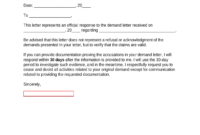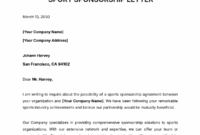In the bustling world of education, effective communication between teachers and parents is truly the cornerstone of a child’s successful learning journey. We all know that a strong partnership between home and school can make a world of difference, fostering a supportive environment where students feel understood and encouraged. However, finding the time and the perfect words to craft clear, comprehensive, and compassionate messages can often feel like an additional challenge in an already packed schedule.
That’s where a well-designed communication strategy comes in, making those vital connections easier to forge and maintain. Imagine having a reliable starting point for every message, a clear structure that ensures all key information is conveyed without overlooking anything important. This is precisely the value a great teacher to parent letter template offers, simplifying the process and helping you connect with families efficiently and thoughtfully.
The Power of Clear Communication: Why Templates Matter
Connecting with parents is more than just sharing information; it is about building a relationship based on trust and mutual respect. From the very beginning of the school year, when you introduce yourself and your classroom expectations, to ongoing updates about a student’s progress, challenges, or triumphs, every message contributes to this vital partnership. Effective communication ensures parents are kept in the loop, feel valued, and can actively support their child’s education at home. Without it, misunderstandings can arise, and opportunities for collaboration might be missed.
A well-structured letter not only conveys facts but also sets the tone for future interactions. It can be incredibly reassuring for parents to receive a clear, professional, and friendly message from their child’s teacher. Whether it is an invitation to a parent-teacher conference, an announcement about an upcoming field trip, or a gentle note about a behavioral concern, the clarity and tone of your message are paramount. This is where a robust teacher to parent letter template becomes an indispensable tool, allowing you to focus on the individual student or specific message rather than reinventing the wheel each time.
Using a template helps you maintain consistency in your messaging, ensuring that all necessary details are included and presented in an organized manner. This saves you valuable time, which, as every educator knows, is a precious commodity. Instead of spending an hour drafting a letter from scratch, you can quickly adapt a pre-written framework, injecting it with the specific details pertinent to the situation. This efficiency doesn’t come at the expense of personalization; rather, it frees you up to personalize the crucial parts without getting bogged down by formatting or basic structure.
Ultimately, the goal is to foster a proactive and positive partnership. When parents feel well-informed and understand your communication style, they are more likely to engage, ask questions, and offer support when needed. A consistent approach, facilitated by a reliable teacher to parent letter template, helps in achieving this by making sure every message is professional, comprehensive, and reflective of your commitment to their child’s success.
Key Elements of an Effective Parent Letter
- A warm and professional greeting
- A clear statement of the letter’s purpose
- Specific, concise details or information
- An explanation of any required action or next steps
- Relevant contact information
- A positive and collaborative closing
Crafting Your Message: Personalization and Purpose
While templates offer an excellent foundation, the real art lies in adapting them to suit your specific needs and the unique context of each situation. Think of your teacher to parent letter template as a versatile blueprint. You wouldn’t build every house exactly the same, even with the same blueprint; similarly, each letter you send should resonate with the specific family and topic at hand. Personalization is key to making parents feel seen and heard, transforming a generic message into a truly meaningful one.
Consider the purpose of your letter. Is it to celebrate a student’s achievement, to gently address a developing concern, to inform about an upcoming event, or simply to introduce yourself? Each purpose will influence the tone, length, and specific details you include. For instance, a celebratory letter might be more concise and enthusiastic, focusing on specific examples of success. Conversely, a letter addressing a concern would require more detailed observations, a clear explanation of the issue, and an invitation for collaborative problem-solving, always maintaining a supportive and non-judgmental tone.
Even with a template, take a moment to tailor the language. Using a student’s name, referencing a specific project, or recalling a particular classroom interaction can make a world of difference. This level of detail shows parents that you know their child individually and are deeply invested in their progress. It transforms a standard form into a personal communication, strengthening the bond between home and school. Avoid jargon where possible, or if necessary, provide brief explanations to ensure your message is accessible to everyone.
Finally, always review your letter before sending it. Proofread for any grammatical errors or typos, and ensure the message is clear, polite, and respectful. Reading it aloud can help you catch awkward phrasing or areas where clarity might be improved. A well-written, personalized letter reinforces your professionalism and genuine care, fostering a positive and productive dialogue with families, which is ultimately beneficial for every student in your classroom.
Establishing and maintaining robust lines of communication with parents is more than just a task on an educator’s to-do list; it is a fundamental aspect of creating a thriving learning community. When teachers and parents work together, sharing insights and support, the potential for student growth and success is significantly amplified. Thoughtful, clear, and consistent communication builds bridges of understanding and trust, paving the way for a truly collaborative educational journey.
By investing a little time in developing and utilizing adaptable communication strategies, educators can ensure that every message sent contributes positively to the home-school partnership. This proactive approach strengthens relationships, addresses challenges effectively, and celebrates achievements together, ultimately benefiting the children who are at the heart of everything we do.


